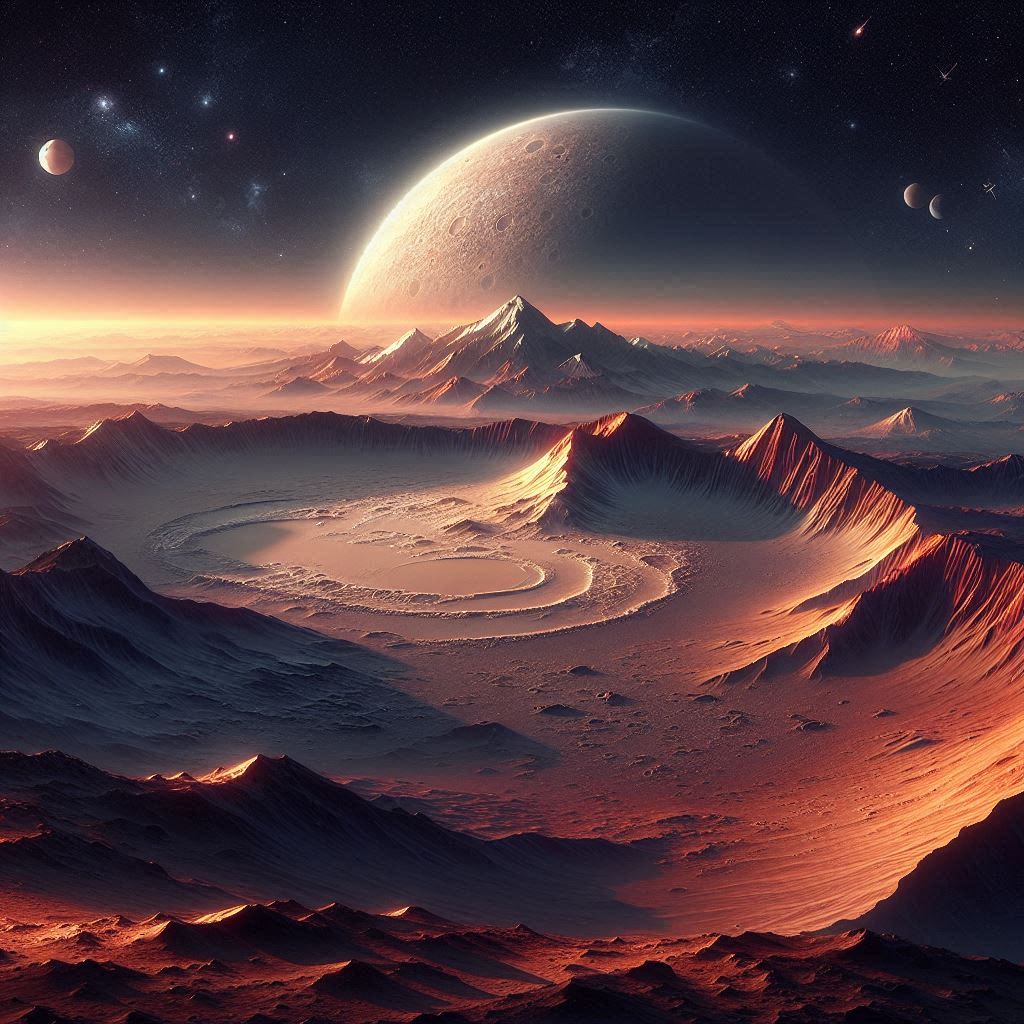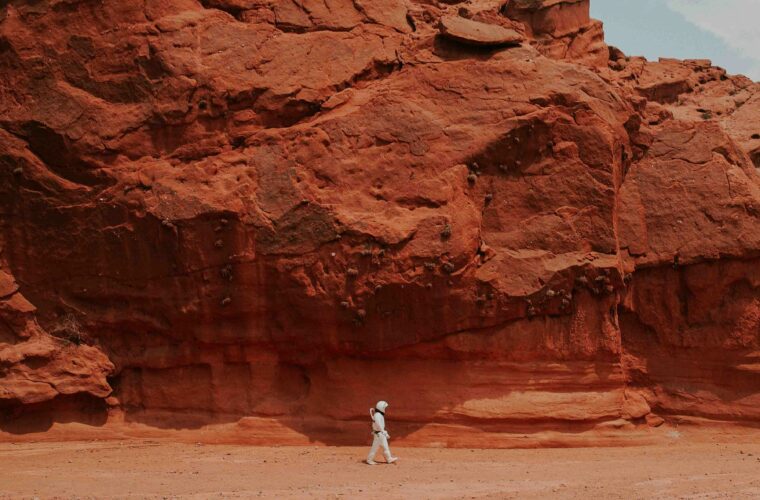An international team of researchers has made a surprising discovery on Mars that could change our understanding of the red planet’s geological activity. Underneath the volcanic region of Tharsis, home to the largest volcano in the solar system, Olympus Mons, lies a huge magma basin that could one day trigger new eruptions. The research, presented by Bart Root of the Technical University of Delft in the Netherlands at the recent Europlanet Scientific Congress in Berlin, revealed the existence of a magma plume more than 1,750 kilometres wide at a depth of about 1,100 kilometres below the Martian surface.
This discovery is the result of a detailed analysis of Mars’ gravitational field, obtained by studying minute variations in the orbits of various satellites orbiting the planet, such as Mars Express and the Mars Reconnaissance Orbiter. By combining this data with seismic measurements made by NASA’s InSight mission, researchers could map the mass distribution within Mars with unprecedented accuracy.
Ancient impacts
The magma basin identified beneath the Tharsis region, which includes Olympus Mons and three other large volcanoes (Ascraeus Mons, Arsia Mons and Pavonis Mons), suggests that Mars may not be as geologically inactive as previously thought. ‘Mars may still have active movements within it, which influence and possibly create new volcanic features on the surface,’ Root said. This discovery raises intriguing questions about the geological future of Mars. Although volcanoes in the Tharsis region have been dormant for millions of years, the existence of this vast plume of magma suggests that they may one day awaken.
With its impressive height of 21.9 kilometres, Olympus Mons may not have seen its last eruption. But the surprises do not end there. Root’s team has also identified more than 20 mysterious underground structures in the northern hemisphere of Mars, where an ancient ocean once stood. These structures, of various sizes and shapes (one even resembles a dog), are denser than their surroundings and have a strong gravitational pull. Their origin remains a mystery: they could be volcanic in nature or result from ancient impacts.

Space to a new mission
Root and his colleagues propose a new mission called Martian Quantum Gravity (MaQuls) to further these discoveries, which would map Mars’ gravitational field in detail from orbit. Lisa Wörner, a researcher at the German Aerospace Centre, emphasizes the importance of this mission: ‘Observations with MaQuls would allow us to better explore the subsurface of Mars, helping us to discover more about these mysterious hidden features and to study ongoing mantle convection, as well as to understand dynamic surface processes such as seasonal atmospheric changes and the detection of groundwater reserves.’
These discoveries shed new light on Mars’s past and present geology and opened new perspectives for future exploration of the red planet. The possibility of future volcanic activity and the presence of mysterious underground structures make Mars an even more fascinating target for scientific research and, potentially, for future human missions. Speaking of volcanic activity in other celestial bodies, did you know that even our Moon could tell us a different story from the one we assumed we knew? Its volcanic activity may be more recent than expected.



